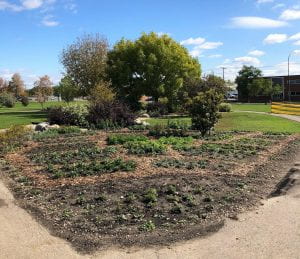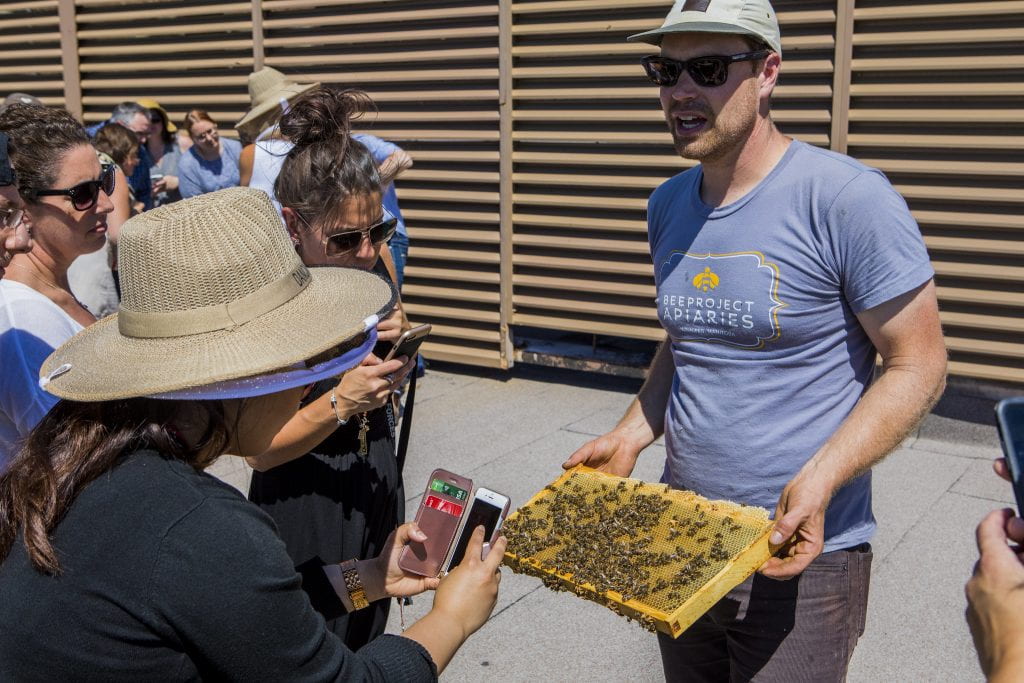New pollinator garden the ‘bees’ knees’ for sweeter honey yields this summer
The bees are back in town, and Red River College is sweetening the deal for its insect friends this year, having added a new pollinator garden to the grounds of the Notre Dame Campus.
For four years, the College has partnered with Beeproject Apiaries to bring hives of honeybees — not to mention the delicious honey they produce — to the rooftops of RRC. Urban beekeeping is one of the many innovative and green initiatives offered by the College as a way to engage staff and students in sustainability efforts on campus and at home, and has contributed to RRC being named one of Canada’s Greenest Employers for the ninth straight year.
 Because pollination is so important to the sustainability of honeybeew, the College opted to complete a new pollinator garden project under the leadership of its Grounds crew this year.
Because pollination is so important to the sustainability of honeybeew, the College opted to complete a new pollinator garden project under the leadership of its Grounds crew this year.
“Staff and student engagement is critical for the success of any of the sustainability projects that RRC initiates, and we’ve seen that many areas of the College are eager to get involved and make sustainability a priority within their departments,” says Sara MacArthur, RRC’s Director of Sustainability.
“We were fortunate to partner with the Grounds department, who went over and above to create this beautiful pollinator garden at the Notre Dame Campus for everyone — not only our pollinator friends, but also students and staff — to engage with and enjoy.”
The pollinator garden is located along the walking path on the southeast grounds of the campus, and features a number of diverse species of flowers and plants in order to support as many different pollinators as possible. These include:
- Harebell flower (Campanula rotundifolia): Producing bell-shaped flowers that bloom singly or in small clusters, this bluebell can be found in meadows, grasslands, rocky slopes, crevices, alpine areas and sandy shores.
- Black-eyed Susan (Rudbeckia hirta): ‘Hirta’ means hairy, referencing the short bristles that cover the leaves and stems. Growing up to three inches tall on stiff, leafy stems, this flower attracts butterflies and birds the whole way up.
- Giant hyssop (Agastache hoeniculum): Not only is this flower a favourite with bees, butterflies and hummingbirds, its seeds attract goldfinches. You’ll want to put your nose up to this one to see if you can smell the faint fragrance of anise.
This summer, RRC has three hives installed on the rooftop of Building A at the Notre Dame Campus. Estimates suggest the hives could yield up to 100 kg of honey, which will later be sold at campus stores and cafeterias, and at College-run farmers’ markets held throughout the year.

